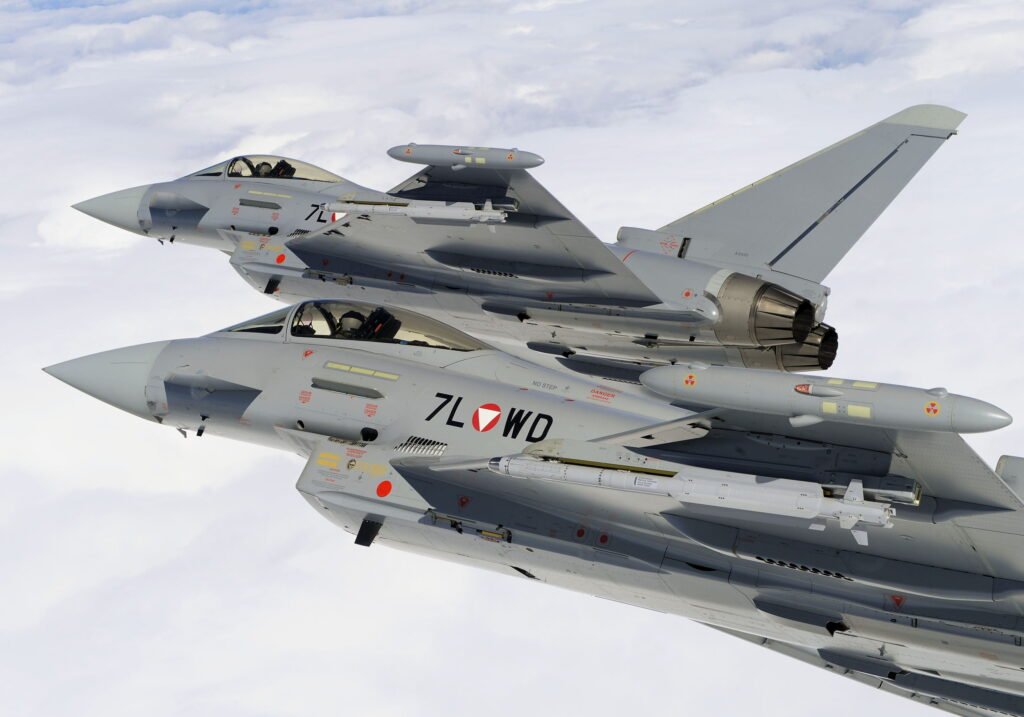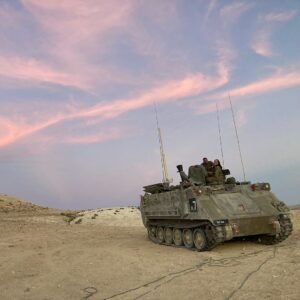Exploring The Design and Development History of The IRIS-T Missile
In the ever-evolving landscape of defense systems, the need for robust air defense capabilities has become paramount. The IRIS-T missile emerges as a cutting-edge solution.

I. The IRIS-T Missile Origin
The IRIS-T (Infra Red Imaging System – Tail/Thrust Vector-Controlled) is an advanced air-to-air missile developed by a multinational consortium of European countries. It was designed to serve as a replacement for the AIM-9 Sidewinder missile in several European air forces.
II. Design and Development of The IRIS-T Missile
The development of the IRIS-T missile began in the late 1990s as a joint venture between Germany, Italy, Greece, Norway, Sweden, and Spain. The consortium aimed to create a highly agile and effective missile with advanced capabilities. The missile’s design focused on improved infrared target tracking, increased range, and enhanced maneuverability.
A. Challenges and Future Developments:
The development and deployment of the IRIS T missile have not been without challenges. Overcoming technological and operational hurdles has been crucial in maximizing its potential. Continuous improvement and innovation are key to refining the missile’s capabilities. Future developments may include advancements in sensor technology, increased range, and improved target discrimination, further enhancing the IRIS T missile’s effectiveness.

III. The IRIS-T Missile General Specifications
| Specification | Details |
| Length | 3 meters (9.8 feet) |
| Diameter | 127 millimeters (5 inches) |
| Weight | 87 kilograms (192 pounds) |
| Speed | Mach 2.0 (2,470 km/h or 1,534 mph) |
| Range | 25 kilometers (15.5 miles) |
| Guidance System | Infrared homing |
| Warhead | High-explosive fragmentation |
| Operational Service | 2005 – Present |
A. Technical Specifications of The IRIS-T Missile
The IRIS-T missile boasts impressive technical specifications that contribute to its exceptional performance. Its design and dimensions allow for efficient integration with various air defense systems and platforms. Powered by a high-performance propulsion system, the missile can attain remarkable speeds, enabling rapid response against incoming targets. Equipped with advanced guidance and control systems, the IRIS T missile ensures precise tracking and engagement of airborne threats. Furthermore, its warhead possesses significant target engagement capabilities, enhancing the effectiveness of defensive operations.
B. Advanced Features and Capabilities:
One of the standout features of the IRIS-T missile is its all-aspect infrared homing system, which enables it to engage targets from any direction. This capability greatly enhances the missile’s versatility and effectiveness in combat scenarios. Additionally, the missile showcases enhanced maneuverability and agility, allowing it to adapt to evolving tactical situations and outmaneuver hostile countermeasures. Countermeasures and anti-jamming capabilities further bolster its resilience, ensuring reliable performance in the face of electronic warfare challenges. With its multi-role capabilities, the IRIS T missile can engage a wide range of targets, making it a flexible asset in air defense operations.

IV. Upgrades and Testing
Over the years, the IRIS T missile has undergone various upgrades to improve its capabilities. These upgrades have included enhancements to its seeker head, guidance system, and propulsion. The missile has undergone rigorous testing to ensure its performance under various operational conditions and against different threats.
V. Variants
The IRIS-T missile has seen the development of several variants to meet specific requirements of different aircraft and air forces. These variants include the IRIS T SL (Surface Launched), which is designed for ground-based air defense systems, and the IRIS T SLM (Surface-Launched Mobile), a mobile version for land-based air defense units.
A. Deployment
The IRIS-T missile has been adopted by several European countries, including Germany, Italy, Greece, Norway, Sweden, and Spain. It is primarily deployed on various fighter aircraft, such as the Eurofighter Typhoon, F-16 Fighting Falcon, and the Saab Gripen. Its adoption has significantly enhanced the air-to-air combat capabilities of these nations.
VI. Why This Missile Was Made
The development of the IRIS T missile was driven by the need to replace aging missile systems, such as the AIM-9 Sidewinder, and to enhance the air-to-air capabilities of European air forces. The IRIS T’s improved infrared target tracking, increased range, and advanced maneuverability make it a highly effective weapon in modern air combat scenarios.

VII. War History
The IRIS T missile has seen operational use in various conflicts and training exercises. While specific details regarding its usage and effectiveness in actual combat are not publicly disclosed, the missile’s deployment with multiple air forces suggests its importance and effectiveness in ensuring air superiority.
VIII. International Collaborations and Export
The collaborative nature of the IRIS T missile project extends beyond development. Participating countries have actively sought export opportunities, offering this advanced air defense solution to allied nations. International partnerships for further development and enhancement have also been established, fostering ongoing innovation and cooperation in the field of air defense.
Read More:-Storm Shadow Missile: Unleashing Devastation and NASAMS Air Defense System: Guarding The Skies













